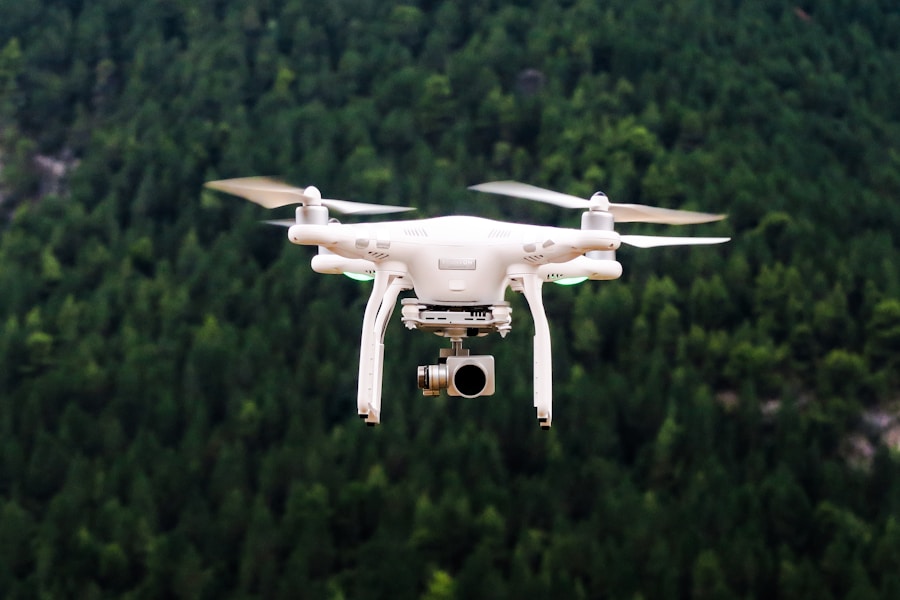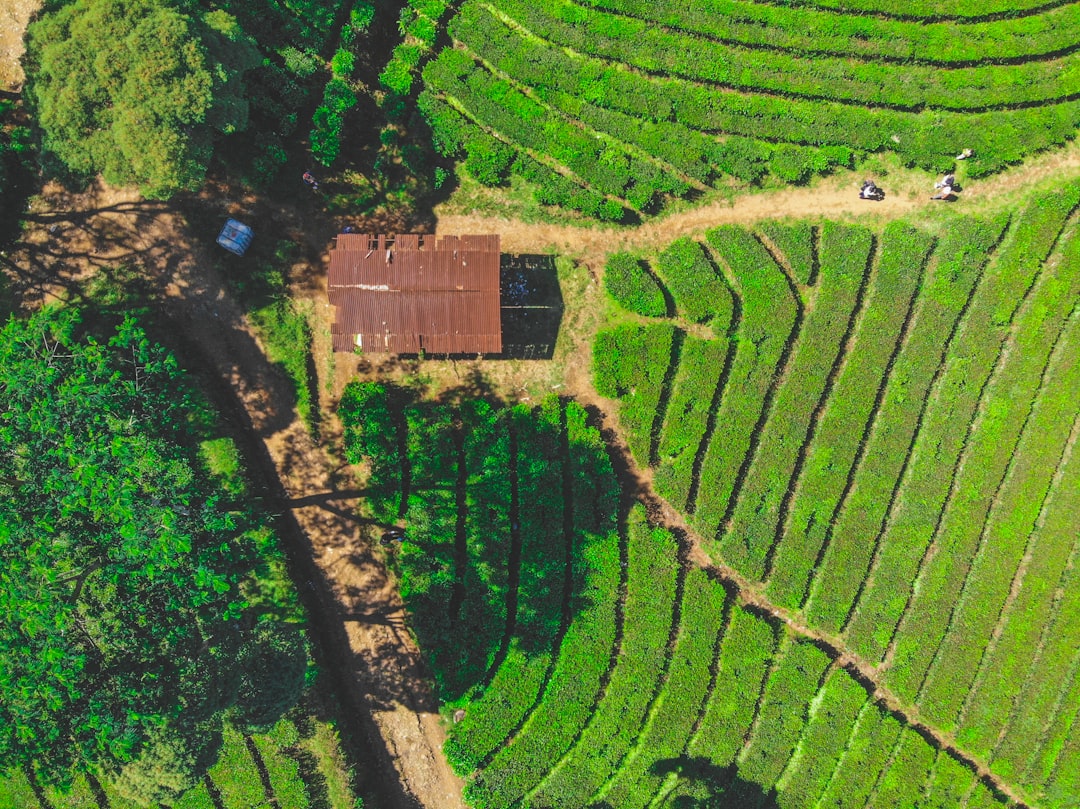Agricultural drones have emerged as a vital component in modern farming, offering a multitude of advantages that can substantially enhance farm productivity and efficiency. One of the primary benefits of agricultural drones is their capacity to provide farmers with real-time data and insights about their crops and fields. Equipped with advanced sensors and cameras, drones can capture high-resolution images of the entire farm, enabling farmers to monitor crop health, detect pest infestations, and identify areas that require irrigation or fertilization.
This real-time data enables farmers to make informed decisions and take timely actions to optimize crop yields and minimize losses. In addition to providing valuable data, agricultural drones can also help farmers reduce time and labor costs. Conventionally, farmers have had to manually inspect their fields and crops, a process that can be time-consuming and labor-intensive.
With agricultural drones, farmers can rapidly and easily survey their entire farm from the air, covering large areas in a fraction of the time it would take to do so on foot or with traditional machinery. This not only saves time but also reduces the need for manual labor, allowing farmers to allocate their resources more efficiently.
Key Takeaways
- Agricultural drones offer benefits such as increased efficiency, precision, and data collection for farmers
- Factors to consider when choosing an agricultural drone include flight time, payload capacity, and ease of use
- Top features to look for in an agricultural drone include GPS navigation, high-resolution cameras, and real-time data transmission
- Different types of agricultural drones include fixed-wing, multi-rotor, and hybrid models, each with their own advantages and limitations
- Tips for selecting the right agricultural drone include assessing your farm’s specific needs, considering maintenance and support, and evaluating the compatibility with existing farm equipment
- Budgeting for an agricultural drone purchase involves considering the initial cost, ongoing maintenance, and potential return on investment
- Future trends in agricultural drone technology include advancements in automation, artificial intelligence, and integration with other smart farming technologies
Factors to Consider When Choosing an Agricultural Drone
Farm Size and Task Requirements
The size of your farm and the specific tasks you want the drone to perform are crucial considerations. For larger farms with extensive acreage, a drone with a longer flight time and greater range may be necessary to cover the entire area effectively. On the other hand, smaller farms may be able to make do with a more compact and affordable drone that can still provide valuable data and insights.
Sensor and Camera Capabilities
The type of sensors and cameras that the drone is equipped with is another important factor to consider. Different drones come with different types of sensors, such as multispectral or thermal cameras, which can be used to capture different types of data about crop health and soil conditions. It’s essential to choose a drone with sensors that are well-suited to the specific needs of your farm and the crops you are growing.
Operational Ease and Technical Expertise
The ease of use and the level of technical expertise required to operate the drone should also be taken into account. Some drones come with user-friendly interfaces and automated flight modes, making them suitable for farmers with limited experience in drone operation.
Top Features to Look for in an Agricultural Drone
When shopping for an agricultural drone, there are several key features to look for that can enhance its performance and usefulness on the farm. One important feature to consider is the drone’s flight time and battery life. Drones with longer flight times can cover more ground and capture more data in a single flight, reducing the need for frequent battery changes and recharges.
Additionally, look for drones with durable construction and weather-resistant design, as they will need to withstand the rigors of outdoor use in various weather conditions. Another important feature to consider is the drone’s data processing capabilities. Some agricultural drones come with built-in data processing software that can analyze and interpret the data captured by the drone’s sensors, providing farmers with actionable insights and recommendations.
This can be a valuable feature for farmers who want to streamline their data analysis process and make faster decisions based on the information collected by the drone. Additionally, consider the drone’s connectivity options, such as Wi-Fi or cellular connectivity, which can enable real-time data transmission and remote monitoring capabilities.
Comparing Different Types of Agricultural Drones
There are several different types of agricultural drones available on the market, each with its own unique features and capabilities. Fixed-wing drones are one popular type of agricultural drone that is known for their long flight times and ability to cover large areas efficiently. These drones are well-suited for mapping and surveying tasks, making them ideal for farms with extensive acreage.
On the other hand, multirotor drones are another common type of agricultural drone that offers greater maneuverability and flexibility in flight, making them suitable for more precise and detailed inspections of crops and fields. In addition to fixed-wing and multirotor drones, there are also hybrid drones that combine features of both types, offering a balance between flight time and maneuverability. These hybrid drones may be a good option for farmers who require a versatile drone that can perform a variety of tasks on the farm.
It’s important to carefully compare the different types of agricultural drones available and consider how their specific features align with the needs of your farm before making a purchase decision.
Tips for Selecting the Right Agricultural Drone for Your Farm
Selecting the right agricultural drone for your farm requires careful consideration of your specific needs and priorities. One important tip is to assess the specific tasks you want the drone to perform on your farm, such as crop monitoring, mapping, or pest detection. This will help you determine the type of sensors and cameras that are most important for your drone to have, as well as other features such as flight time and range.
Another tip is to consider the level of technical support and training that is available for the drone you are considering purchasing. Some manufacturers offer comprehensive training programs and technical support services to help farmers get up to speed with operating their drones effectively. This can be particularly valuable for farmers who are new to using drones and may require additional assistance in learning how to maximize their drone’s capabilities.
Budgeting for an Agricultural Drone Purchase
Initial Costs and Ongoing Expenses
When budgeting for an agricultural drone purchase, it’s essential to consider not only the upfront cost of the drone itself but also any additional expenses such as accessories, spare parts, and ongoing maintenance. This comprehensive approach will help you determine how much you are willing to invest in an agricultural drone, taking into account both the initial purchase cost and any potential long-term expenses.
Calculating the Return on Investment
It’s crucial to assess the potential return on investment that the drone can provide for your farm. Evaluate how much value the drone can add in terms of improved crop yields, reduced labor costs, and more efficient farm management practices. This calculation will help you determine whether the investment in an agricultural drone is justified based on the potential benefits it can bring to your farm.
Justifying the Investment
By carefully considering both the initial costs and potential return on investment, you can make an informed decision about whether an agricultural drone is a worthwhile investment for your farm.
Future Trends in Agricultural Drone Technology
Looking ahead to the future, there are several exciting trends in agricultural drone technology that are poised to revolutionize farming practices even further. One emerging trend is the use of artificial intelligence (AI) and machine learning algorithms to analyze the data collected by agricultural drones and provide more advanced insights and recommendations for farmers. These AI-powered systems can help farmers make more informed decisions about crop management and optimize their farming practices based on real-time data.
Another future trend in agricultural drone technology is the development of more specialized sensors and cameras that can capture even more detailed and specific data about crop health and soil conditions. For example, hyperspectral cameras are becoming increasingly popular for their ability to capture highly detailed spectral images of crops, allowing farmers to detect subtle changes in plant health that may not be visible to the naked eye. As these technologies continue to advance, agricultural drones will become even more powerful tools for precision agriculture and sustainable farming practices.
In conclusion, agricultural drones offer a wide range of benefits for modern farmers, from providing real-time data and insights about crop health to saving time and labor costs. When choosing an agricultural drone for your farm, it’s important to consider factors such as size, sensors, ease of use, and connectivity options. Additionally, carefully compare different types of agricultural drones available on the market before making a purchase decision.
Budgeting for an agricultural drone purchase involves considering both upfront costs and potential long-term expenses, as well as assessing the potential return on investment for your farm. Looking ahead, future trends in agricultural drone technology such as AI-powered data analysis and specialized sensors are set to further enhance the capabilities of agricultural drones for precision agriculture and sustainable farming practices.








